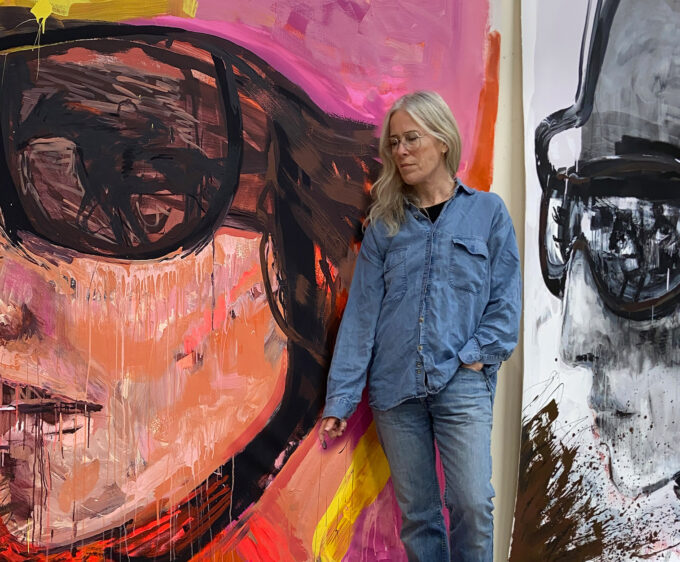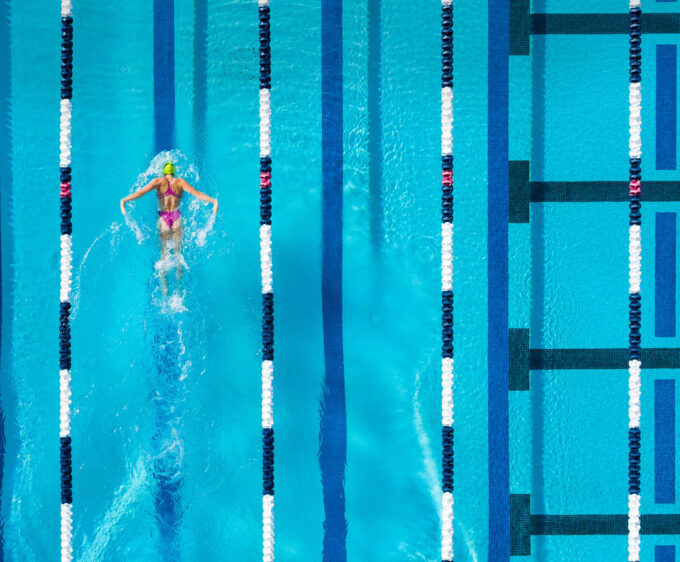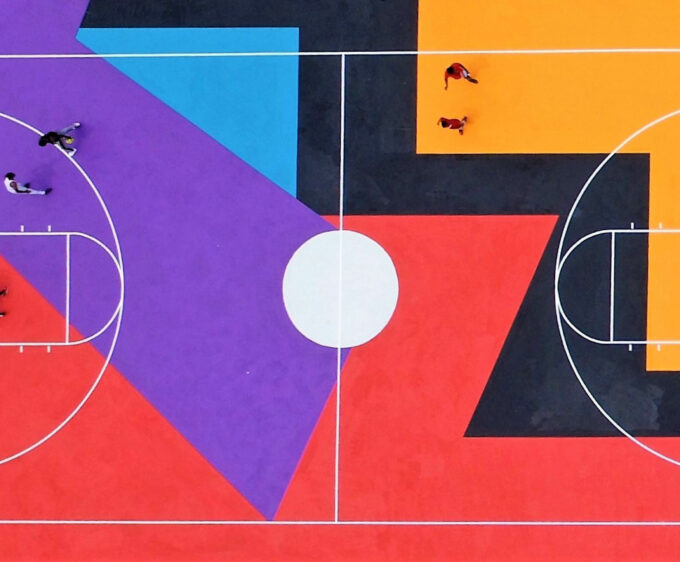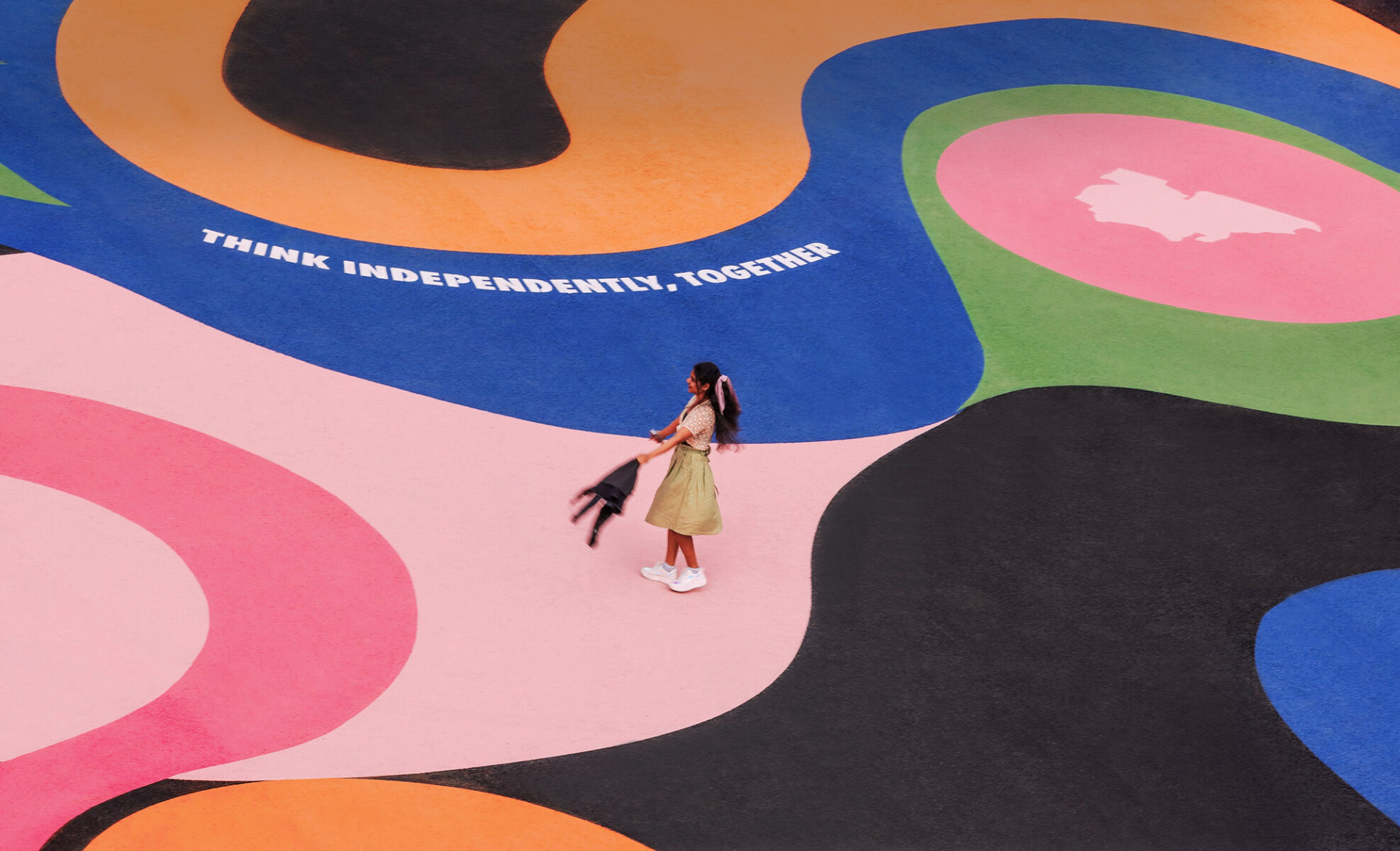
Business: Artist Lois O’Hara
From basketball courts to murals and sculptures, artist Lois O’Hara uses the power of colour to brighten up public spaces. We chat to her about working with brands, the changing landscape, and what’s coming up next
By Glorious
Brighton-born artist Lois O’Hara’s work is renowned for its mix of bright colours and flowing shapes that inspire people to get moving. Lois has a positive outlook on life, so it’s no surprise that power and strength is reflected through her artwork. She has transformed many public spaces and also collaborates with an array of exciting brands. We wanted to hear more about her recent projects and where business is heading for Lois in the future.
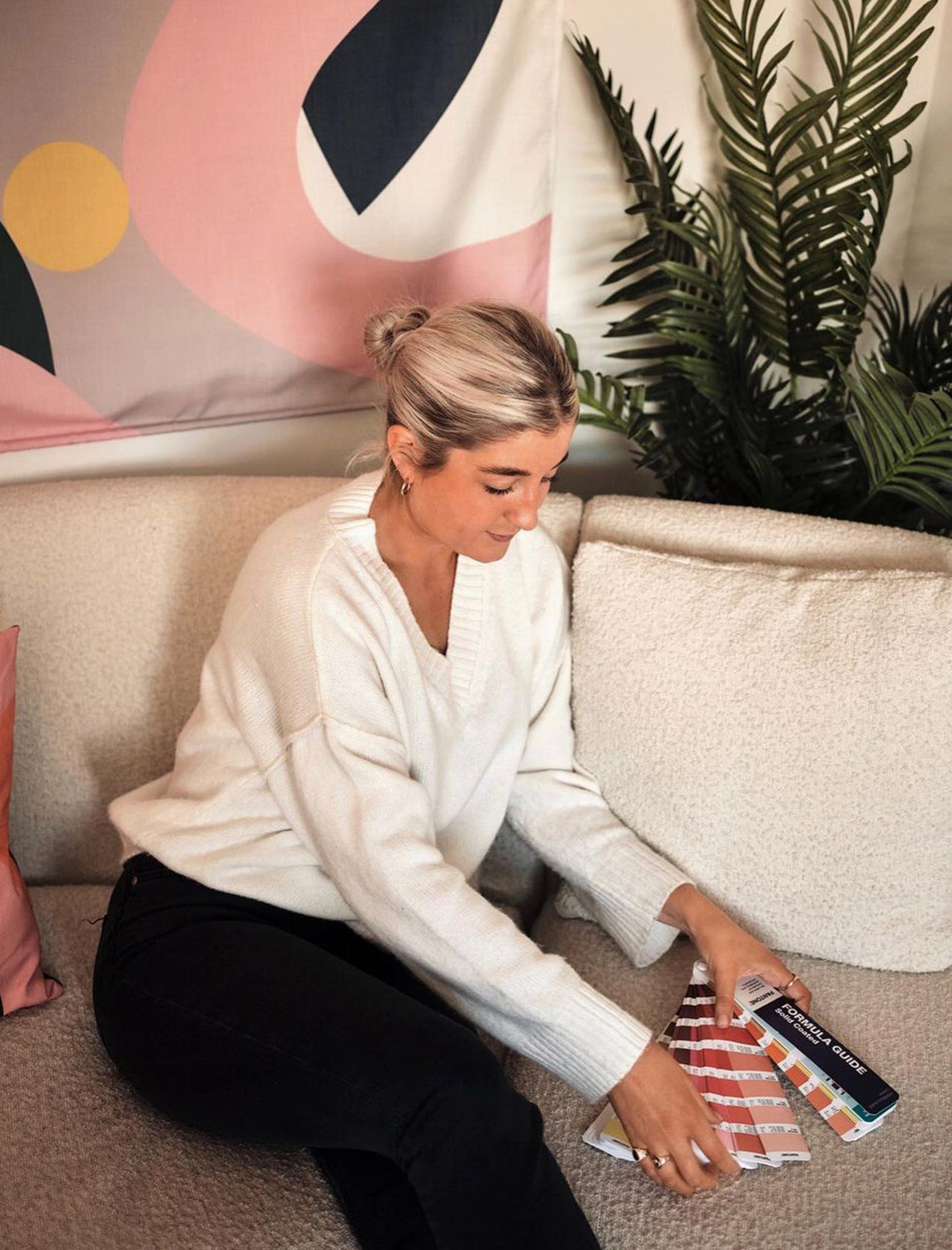
Glorious: What does the business of sport mean to you?
Lois O’Hara: I would say, as an artist and designer, it means figuring out how we can put money into public sport areas to revive those places and encourage more sport. It’s important to ensure that where councils are concerned, their pots of money get used properly, for things like renovations and taking care of sports courts and play areas. The goal is to encourage more sport-based local communities.
Glorious: Your work is strongly influenced by sport. Why is that?
Lois O’Hara: It all started in Brighton at my local basketball court. I would always walk or drive past it and think it’s such a great space and location, but it’s not getting used for sport. I saw it happening in America, but not here. So, I thought, how can I bring an art court to that area to encourage more play? This involved repainting the surface, putting up new backboards, and new nets to create an attractive space so that the local community can use, and want to use, that space again.
Glorious: Were you interested in sport anyway, or is it community that is more important to you?
Lois O’Hara: Definitely community is important to me, but in terms of sport, I’ve always been quite active and sporty. As a kid, I was into different sports. It all started with surfing, which was a bit unusual in the UK with the weather we have, but then I moved on to netball and basketball.
Glorious: How do you monetise your art? Do you mainly get paid by councils or brands/businesses, and have you noticed a change in the commercial landscape?
Lois O’Hara: The way I make money varies! I do a lot of council-based work where I help renovate public spaces using funding provided by the council. I also work with businesses and brands for corporate projects, which has become more popular and in demand lately. I have definitely seen an increase in interest since COVID, and there seems to be a renewed energy among sports brands to bring creativity to the forefront and reinvigorate their brand.
Glorious: How did the TAG Heuer x Porsche collaboration come about?
Lois O’Hara: Ah! That was a good one! TAG Heuer found my work online and sent a brief to a few artists, including me, to submit a proposal. The collaboration was with Porsche to promote their new film, The Chase for Carrera, starring Ryan Gosling, and their new watch range. It was an exciting project where I had to create a Porsche car sculpture, which is now displayed in their store on Oxford Street. Porsche often works with TAG Heuer because of the link between time, sport, and movement, which was a great fit for my art style inspired by fluid shapes and movement.
Glorious: What was the process?
Lois O’Hara: The Porsche sculpture got delivered to me, and I had to film myself painting it and putting my signature style onto it. I had it for two weeks, and I did it bit by bit, allowing for drying time. I could have done it quicker, but that’s how long it took!
Glorious: Is that the most luxurious brand you’ve worked with?
Lois O’Hara: Yes, definitely! It pushed my practice in a slightly different direction. I couldn’t use pink because it didn’t fit in with turquoise colours. In the past, that would have been a problem because of my brand colours, but it’s becoming less so nowadays. It’s important to be diverse when you are working with brands, of course they want their colours because it’s a collaboration. I realise now that I can use a brand’s colours while still sticking to my signature style. Although my work heavily uses colours as a means of communication, it’s more important to express movement and fluidity.
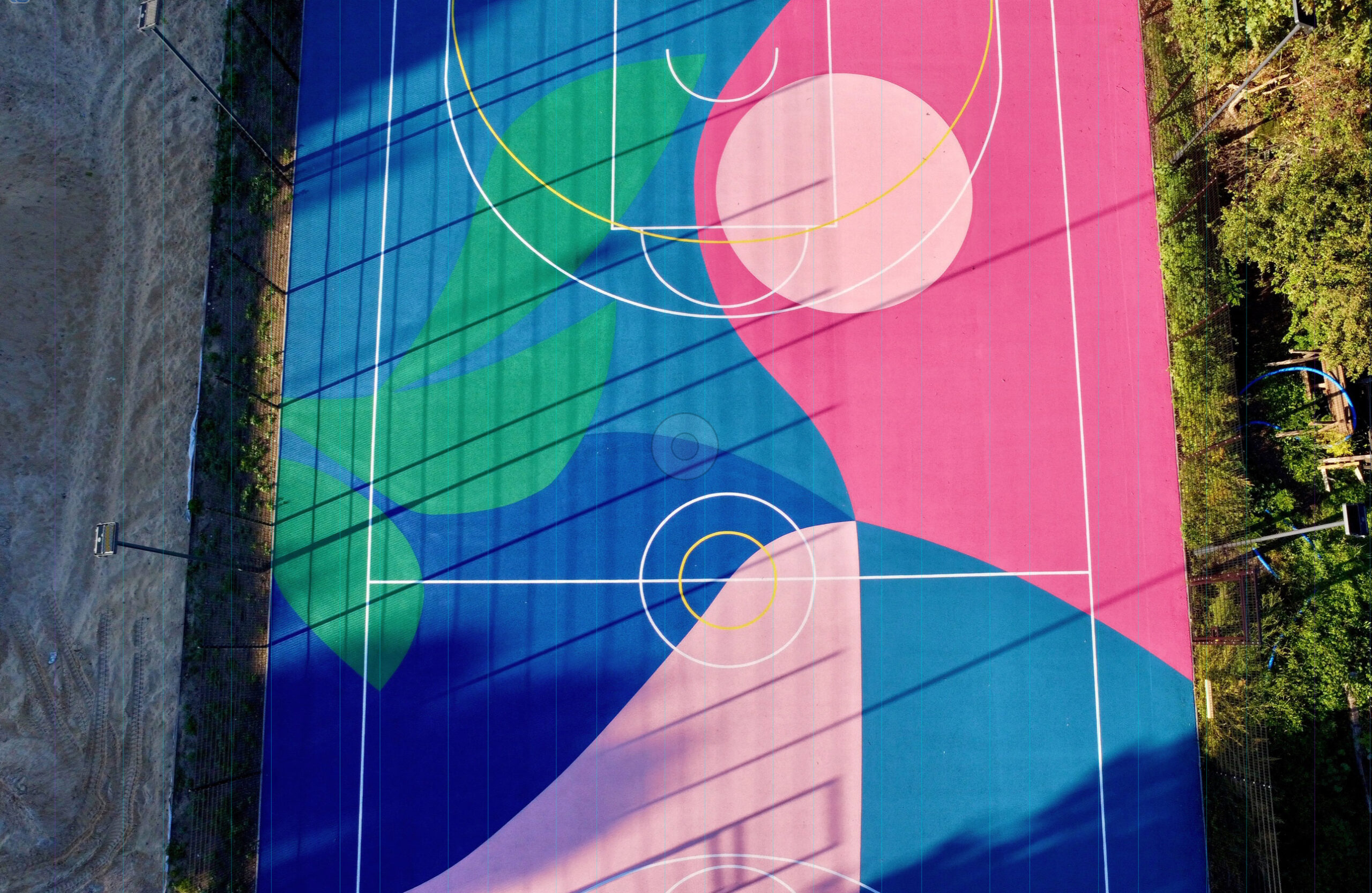
LANDSCAPE
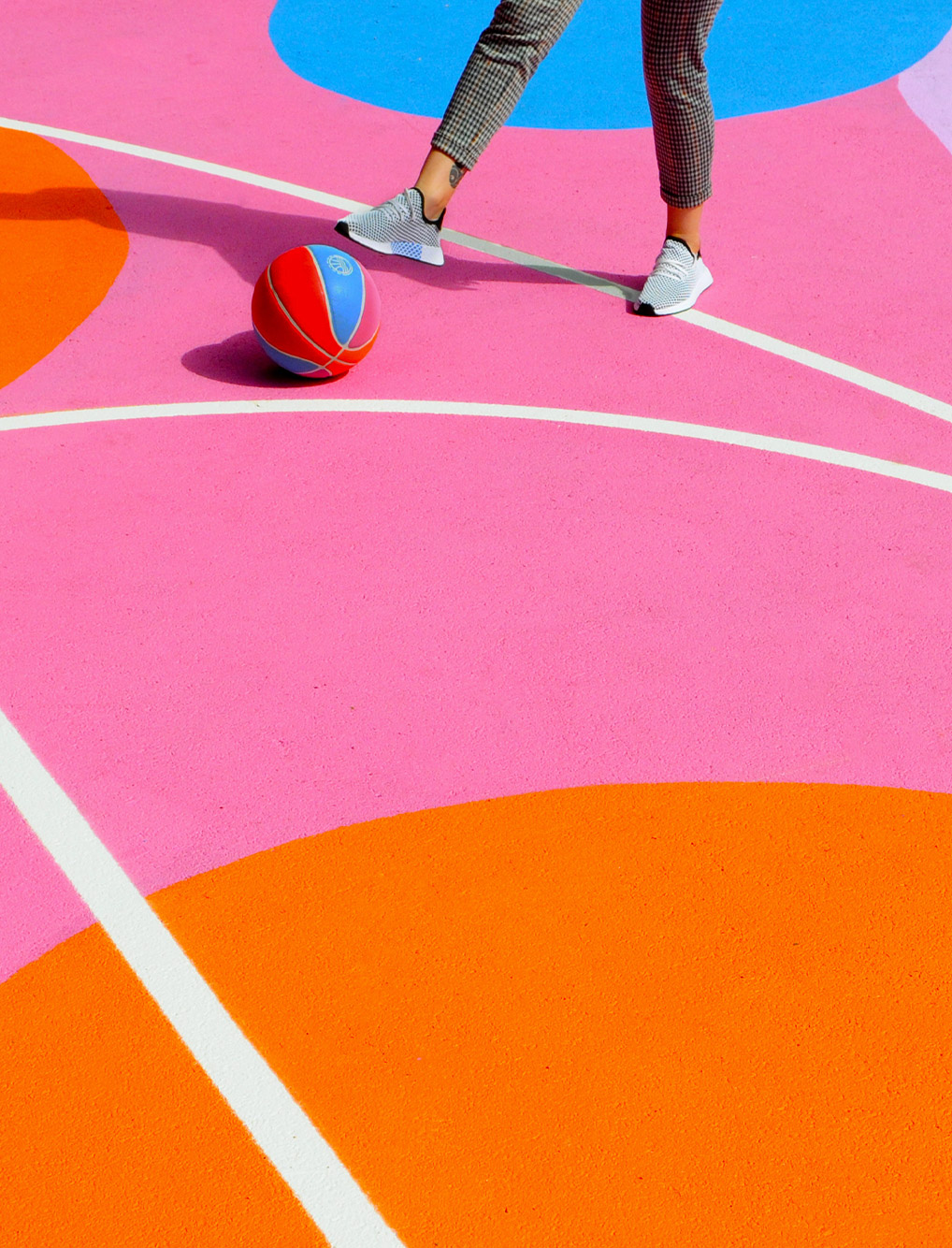
Glorious: From a creative viewpoint, do you see the landscape of women’s sport changing?
Lois O’Hara: It’s an interesting one. I like to think that it will continue to be more equal and diverse, even in terms of how much women are paid. In terms of basketball courts, which is my area, it’s generally all men that I speak to. I know they often think that I am going to be male, especially with the name Lois, I often get called Louis. I believe the more we can talk about women, the more they will feel that they can participate in all areas of sport.
From a creative aspect, there is a lot more focus on products and ranges being much more colourful, brands are becoming far more open to that and less rigid. For example, TAG Heuer is traditionally a fairly masculine brand, but is trying to steer away from that image now.
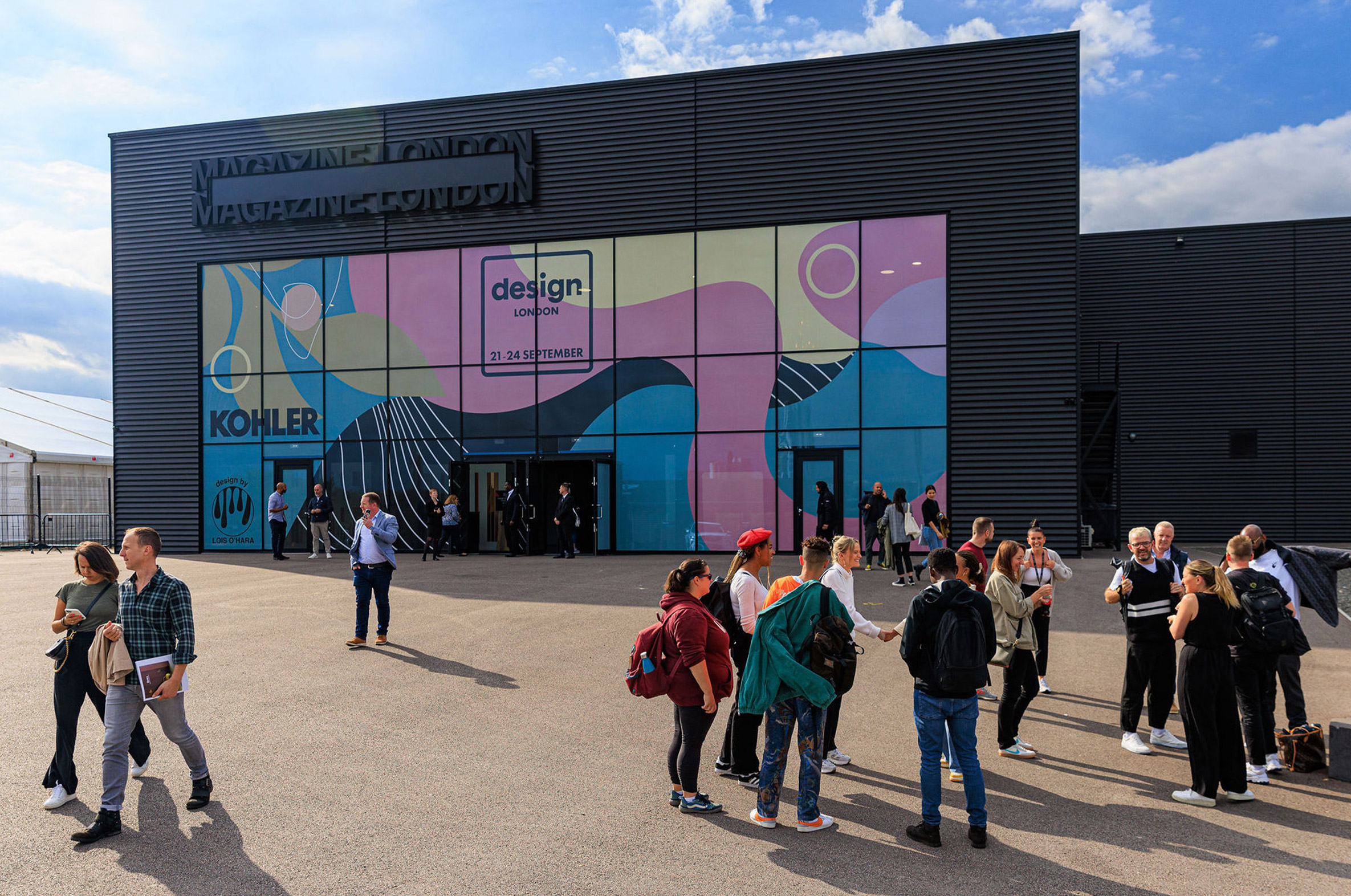
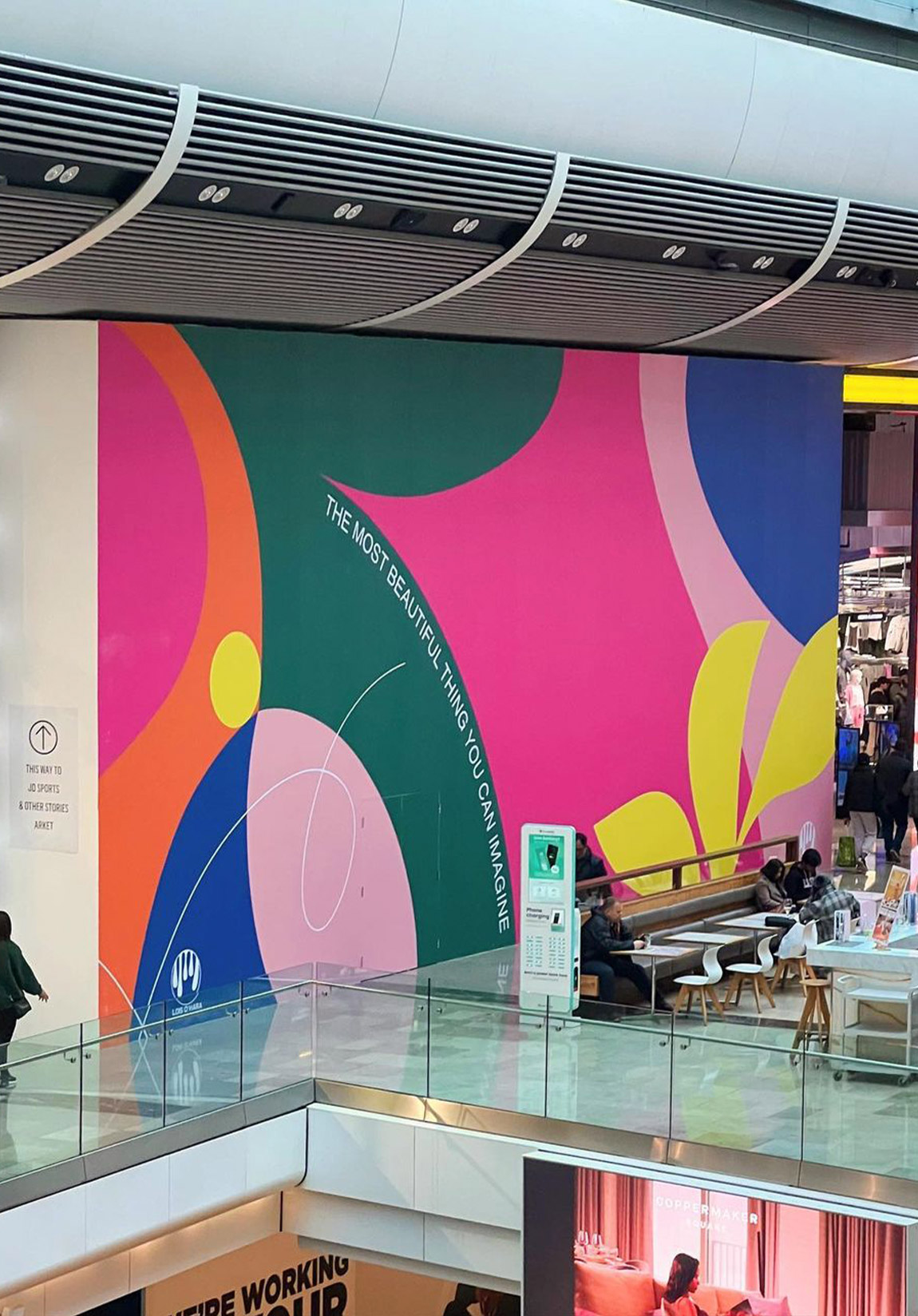
Glorious: Who else have you collaborated with recently?
Lois O’Hara: I worked on a project last year for Design London. That was for adidas, so was quite a prestigious brand to work for. It was a mural, to promote their ‘Made to be Remade’ campaign, as they were releasing new products made from sustainable materials. There were a lot more restrictions in terms of what could be done, so that was another challenge.
Glorious: What would you advise artists who want to stay true to their craft but also need to make a living?
Lois O’Hara: I’d say it’s quite easy to look around and see what’s fashionable in terms of art and design and then apply it to your own work, but that won’t last. You’ve got to stick to creating work which is true to you and figure out what you like and what inspires you. Look around your hometown and think about when you were younger and look at your photographs and things like that. It’s easy to replicate what’s trendy, but that won’t last.
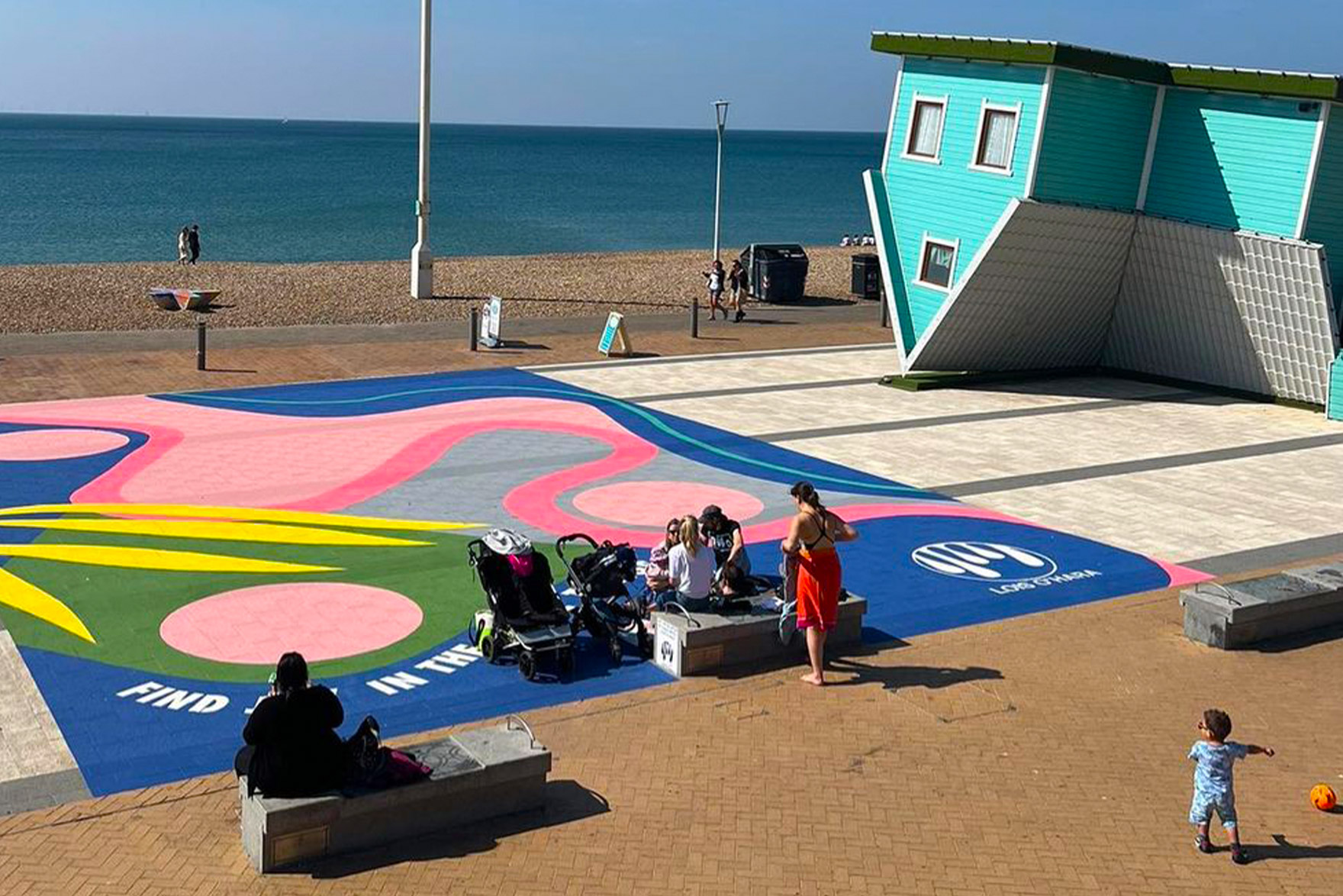
Glorious: Is is your hometown that inspires you?
Lois O’Hara: I’m inspired by a lot of things, but yes, my hometown does inspire me – the sea, I just like the quirky nature of Brighton. I’ve always been a lover of colour and so has my mum. Since I was young, she has always worn crazy colourful dresses, and as my dad loves colourful clothes as well, it has always been in the family.
Glorious: So what’s next? Anything you can tell us?
Lois O’Hara: I’ve got another project launching this week for Westfield, who are good to work with. It’s pretty last minute, but they needed a mural for an empty shop unit. And then I’ve got something unique coming up for W London Hotel. I can’t tell too much about that at the moment, but it’s gonna be a good one!
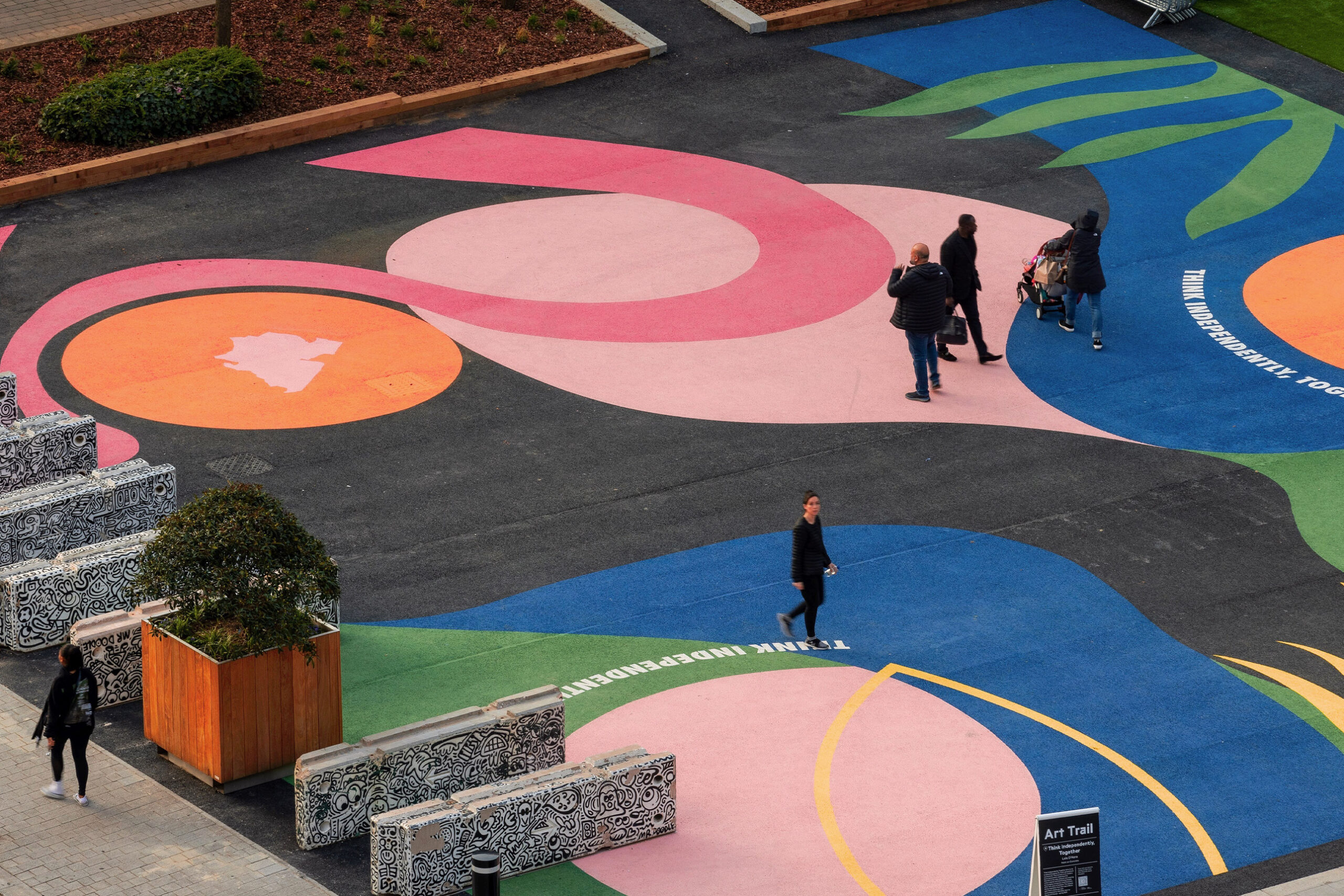
Editorial Design by this is root

